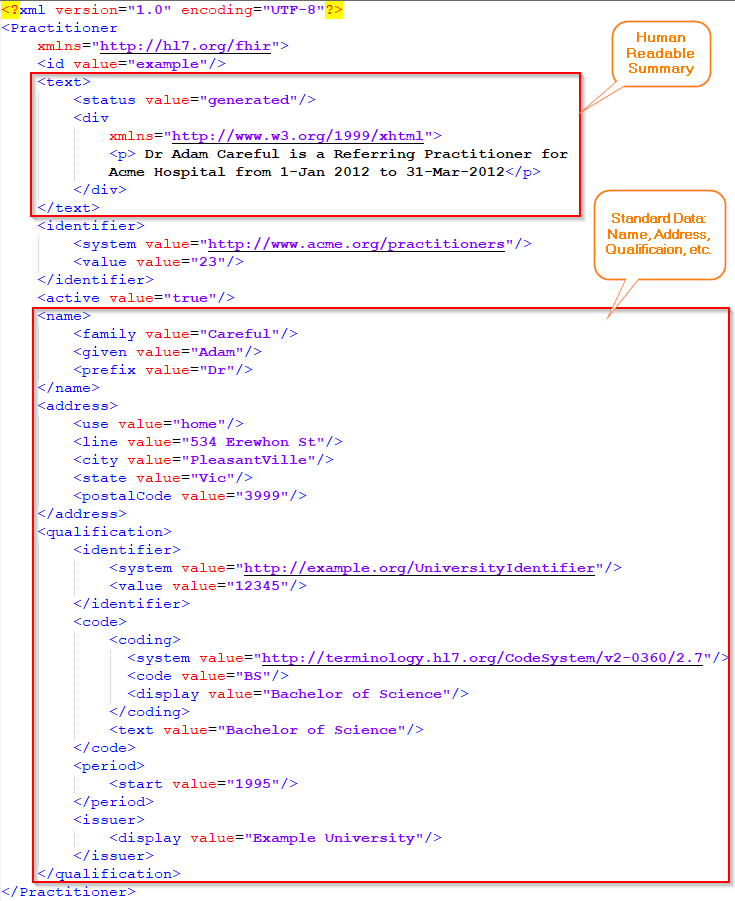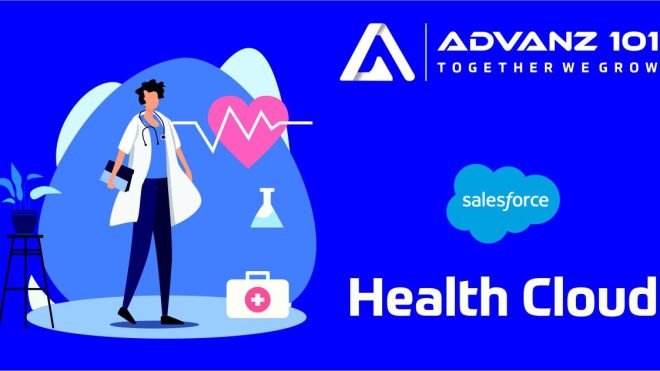Salesforce Health Cloud is a patient relationship management tool that uses cloud technology to give consumers access to intelligent, interlinked, and customized communication. For easing the exchange of health data, Salesforce is always committed to interoperability and the usage of various health IT standards like HL7 (Health Level Seven). HL7 is a standard for transferring electronic health records across different healthcare systems. Thus, the Salesforce Health Cloud data model can analyse and store the EHR (Electronic Health Record) data sent via HL7 data messages. The data was formerly kept in a packaged EHR data model; however, as of the most recent Health Cloud updates, a new data model called Clinical Data Model has been introduced. Let’s understand how interoperability is made possible in Salesforce Health Cloud using FHIR.
EHR Data Model
The older EHR data model is built on the Health Cloud managed package. It doesn’t support code-set resources as defined by FHIR standards. Data related to these resources was captured as plain text fields, making it challenging to upsert patient data. Moreover, this data model has a highly denormalized structure, which can lead to data inconsistency because the same data is stored in multiple records. Since the packaged EHR data model’s records are view-only, the external source system is the only one that can be the definitive source of information.
Clinical Data Model
The Clinical data model in Health Cloud is a recent development that complies with the FHIR (release 4) specifications. The standard objects in the Clinical data model store all sorts of clinical data, including conditions, medications, encounters, immunizations, procedures, etc. The EHR data model was replaced with the clinical data model, which is built on the core Salesforce platform. Many FHIR properties are supported and aligned with FHIR (release 4) in the FHIR-aligned data model’s implementation. Care providers and insurance payers can now easily link HL7 and FHIR data to Salesforce objects and fields by mapping them to standard objects.
Fast Healthcare Interoperability Resources (FHIR)
Fast Healthcare Interoperability Resources (FHIR®) is a next-generation standards framework developed by HL7. A collection of modular parts known as “Resources” is used to construct FHIR implementations. HER and EMR data exchange and server communication in healthcare providers are the appropriate uses of FHIR. It supports RESTful architectures and seamless exchange of information using messages or documents with service-based architectures. Along with administrative concepts like patient, provider, organisation, and device, FHIR also contains resources for clinical concepts, including problems, recommendations, diagnoses, treatment plans, and finances.
Example Resource: Practioner3

Interoperability, the Clinical Data Model and FHIR
Electronic health records (EHRs) have been used in hospitals and clinics for a long time; however, they are often mismatched since they employ different types of EHRs. Much data is coming in from numerous sources. This data lacks context and it is often disconnected. An interoperable system that permits data sharing is necessary to guarantee that patient information from different sources is accessible to all healthcare professionals, care teams, and IT systems. Modern healthcare systems aim for a 360-degree view of each patient and rely on HL7 and FHIR standards to interact with one another.
Salesforce Health cloud’s clinical data model is another step towards smoother interoperability as this framework supports the integration of health data from external source systems such as EHRs. The fields and entities of the clinical data model are aligned with their counterparts in FHIR R4. It helps to create a connected healthcare experience to drive interoperability for all patient care stakeholders. However, the clinical data model only supports the attributes that Health Cloud users need, not all in every FHIR R4 resource.
Salesforce Standard Objects and FHIR Resource
The Salesforce implementation of FHIR R4 differs from the HL7 definition due to the functioning of the Salesforce platform. The fields of a few standard objects in Salesforce are mapped to available FHIR resources in the following table.
| FHIR 4 Resource | Salesforce Object | Comments |
| AllergyIntolerance | AllergyIntolerance and PatientHealthReaction | Represents a clinical assessment of a patient’s allergy or intolerance. |
| Condition | HealthCondition | Represents a clinical condition, problem, or any clinically relevant occurrence that is a matter of concern. |
| Device | Asset and CareRegisteredDevice | Represents a device or device registration information for a patient or a care program enrolee. |
| DiagnosticReport | DiagnosticSummary | Represents the findings, interpretations, and summaries of tests performed on patients. |
| DocumentReference | DiagnosticSummary and Diagnostic SummaryDetail | Represents the findings, interpretations, and summaries of tests performed on patients. |
| Dosage | PatientMedicationDosage | Represents dosage information for medication. |
| Encounter | ClinicalEncounter, ClinicalEncounterDiagnosis, ClinicalEncounterFacility, ClinicalEncounterIdentifier, ClinicalEncounterProvider, ClinicalEncounterReason, and ClinicalEncounterSvcRequest | This broad object covers multiple phases of a patient’s healthcare service experience, from pre-admission to stay to discharge and everything in between. |
| Immunization | PatientImmunization and PatientHealthReaction | Represents information about a patient’s immunizations and adverse reactions to an allergy, intolerance, or immunization. |
| Medication | Medication | Represents detailed information about different medications. |
| MedicationRequest | MedicationRequest | Represents a request or order for the supply of medication, along with information about how it should be administered. |
| MedicationStatement | MedicationStatement | Represents a record of medication that the patient is currently taking or has taken in the past. |
| Observation | CareObservation and CareObservationComponent | Represents the observed values for care metrics originating from external systems that contain biometric data. |
| Practitioner | HealthcareProvider and Person Accounts | Represents business-level details about the healthcare organization or the practitioner. |
| PractitionerRole | HealthcarePractitionerFacility and CareProviderFacilitySpecialty | Represents all the specialties that the practitioner provides at a given location |
| Procedure | PatientMedicalProcedure and PatientMedicalProcedureDetail | Represents detailed information about a healthcare procedure the patient has undergone, is undergoing or will undergo. |
| ServiceRequest | ClinicalServiceRequest and ClinicalServiceRequestDetail | Represents requests for a procedure or diagnostic service that needs to be planned, proposed, or performed as part of the patient’s healthcare. |
Integration Issues to consider
Contrary to the FHIR specification, Salesforce does not use the same FHIR resources. As previously mentioned, the clinical data model underpins the Salesforce implementation of FHIR. To properly align the messages between FHIR-based systems and corresponding fields and objects of Health Cloud, a middleware integration solution is required. Keeping the following in mind will help in smoother integration:
- While the clinical data model in Salesforce saves patients’ information in the FirstName, LastName, and FullName fields, the FHIR resource stores names in the FirstName, MiddleName, and LastName fields. So, during integration, you need to ensure the proper mapping.
- While Salesforce requires a picklist for some objects and fields, FHIR offers a value set with conceptually straightforward values.
- Salesforce uses a string for a few resources that FHIR defines as URIs.
- FHIR supports zero-to-many (field can have no value, one value, or many values.) references for a few resources, while Salesforce doesn’t support it.
- Salesforce doesn’t have data types for periods, quantities, ranges, and ratios; therefore, these data types must be flattened to sets of multiple fields in their implementation.
The most recent version of Salesforce Health Cloud is better equipped to address ongoing EHR and EMR integration problems while offering a more well-coordinated patient experience.
Advanz101 Systems is a leading Salesforce CRM solutions and consultancy company helping its customer with digital transformation with many years of experience in healthcare and related technologies.
Learn more about how Advanz101 Systems can help you in solve the challenges of using Salesforce Health Cloud.
References
1 Salesforce Health Cloud Developer Guide – https://developer.salesforce.com/docs/atlas.en-us.health_cloud_object_reference.meta/health_cloud_object_reference/object_ref_overview.htm
2 FHIR – https://hl7.org/fhir/


